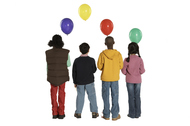 This is the third installment in this blog series; we are more than halfway through! It's based on an article by Terry Cross and colleagues written in 1989 about cultural competence. In the article, the authors talk about cultural competence in relation to organizations and systems. In this blog series, we're attempting to pare it down to the individual and include tips on how to develop these skills in your home with your kids. The third essential element for cultural competence is being conscious of the dynamics inherent when cultures interact. Well, what the heck does that mean?!? Well, when people of different cultures talk to each other, work with each other, befriend each other, there are going to be some cultural misunderstandings. What is considered normal in one culture may be different or strange in another culture. For example, there are some countries that teach their school children that there are 5 continents, not 7. In Norway, it's often considered bad table manners to eat a sandwich or burger with your hands. Apparently, there are lots of things that Americans do that others find rude (and vice versa!). So there are bound to be misunderstandings. How can you teach your child to anticipate, and even embrace, these awkward and sometimes uncomfortable situations?
Did you enjoy this post? Sign up for the newsletter! Instead of having to remember to check out the blog, you will get great information delivered right to your email. Tips, strategies, articles, and videos so you don't have to figure it all out yourself! When you sign up, you will receive a FREE diverse book list for kids of all ages-babies to young adults. Enjoy and tell me what you think!
1 Comment
Carol
3/21/2016 08:10:01 pm
The biggest takeaway contained in this blog is the tip about being aware and monitoring verbal and nonverbal language. I think that adults often underestimate how perceptive young kids (and older ones for that matter) can be. Kids can help adults monitor their biases and hopefully confront them. Great blog, Dr. Sweeney!
Reply
Leave a Reply. |
AuthorDr. Sweeney is a licensed school psychologist and cultural competence expert. Here are her musings on life in a multicultural world. Archives
February 2017
CategoriesInterested in writing a guest blog post? Contact me for more information!
|
Proudly powered by Weebly

 RSS Feed
RSS Feed